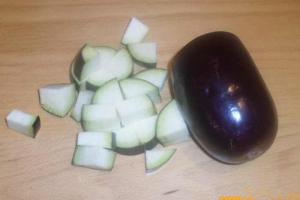Updated 09.24.2017
Today, glass-ceramic stoves have begun to replace conventional ones due to many advantages: ease of cleaning, indication of the heat of the tile, and power. There are practically no problems with them, but when strong blows or excessive heat exposure may cause cracks to appear.
And while some are lucky and only have a small crack in the corner of the surface, for others the defect may cover the entire cooking area.
Why are such cracks dangerous?
- They can lead to general operational failure;
- Allows excess heat to pass through;
- They spoil appearance slabs;
- They can crack even more, leading to complete destruction of the glass;
- Contact with the stove may result in an electric shock.
Why did the hob crack?
So, you have discovered an ugly crack on the surface of the slab. Where could he have come from?

Do not forget that the second two reasons are most likely caused by a manufacturing defect or improper assembly of the slab. It happens that the surface is placed close to the edges of the slab, and when it expands, it begins to burst.
Be that as it may, there is no need to leave everything as is and continue to use the stove without worry. First of all, follow the safety rules:
- Avoid cooking on panels that are cracked;
- Use the right cleaning products hob;
- Do not touch metal pans with wet hands to avoid electric shock;
- Do not work on the crack yourself;
- Do not attempt to make repairs yourself.
If you have such a defect, you must definitely call a specialist. If the stove's warranty period has not yet expired, then you are relatively lucky, and all is not lost. Take a photo of the crack (just in case), and contact the service center for help:
- Call a professional to your home - he will be able to conduct an inspection and decide whether the surface can be repaired. By the way, this is precisely why a photo may be useful to you - some experts prefer not to just take words;
- If the warranty has not yet expired, the surface may be examined to determine the cause of the breakdown;
- If a manufacturing defect or other reasons beyond your control are discovered, you will either have the glass ceramics replaced, or even replace the stove with a new one (maybe with a small additional payment);
- Has the warranty period expired? You can contact not the company center, but private companies engaged in equipment repair. Their technicians will also help you identify the source of the defect and get rid of it.
But be prepared for the fact that if the crack appeared due to an impact (i.e., your fault), you will have to fork out for either repairs or a new model. It all depends on the specific case. And one more piece of advice: be careful with equipment - safety rules come first!
Please rate the article:
Hi all.
I decided to write about this, because this happens to many people, but there are either no solutions on the Internet, or I haven’t found them.
I’ll say right away that the most correct thing would be to change the glass or surface assembly, but if this solution does not suit some of you (like me), then this post is for you.
It will most likely not be possible to return the surface to its original state and mask the crack, but “leaving” it in service is fine.
I have a top model Bosch induction with infrared sensors temperature control, so I really wanted to keep this particular panel (especially since they are no longer on sale now). The dealer asked 25 thousand for the glass, which is a little... expensive. For this money you can buy a full-fledged panel. So I decided to try gluing it together.
A little information about glass ceramics: it is not glass, or rather not ordinary silicate glass, but quartz glass. And the properties of quartz glass are different. For example, it can be locally heated to high temperatures and immediately cooled (even tempered glass will burst), and glass ceramics can also be processed.
From this follows the method of soldering quartz glass. For example, crushed silicate (ordinary) glass. Since quartz can withstand temperatures up to 1200 degrees, and silicate melts at 600 degrees. It didn’t work out for me, because when filling the crack dry, the burner flame simply blows out the crushed glass, and when using a liquid base, I used silicate glue, the silicate glue simply boiled from the flame, foamed along with the crushed glass, and again, the soldering did not work.
I gave you the information - whoever wants it, go for it.
Adhesives that have satisfactory adhesion to glass:
1) Cyanoacrylate (superglue). will not suit us in any way, because Maximum temperature use 80 degrees
2) Epoxy resin. can be used except for heating zones. temperature up to 280 degrees, but when heated it releases toxic substances
3) Silicate glue (stationery, liquid glass)... everyone knows glue from childhood. Almost perfect for our needs! we will use it
4) Silicone sealant- temperature up to 200 degrees. there are heat-resistant options with temperatures up to 300 degrees, but they only come in brown
I’ll say right away that I used all three suitable options.
I started with silicate glue. The initial result pleased me, but... the seam did not pass the load test. In the end, I did this: first I used silicate glue along the entire length of the crack, then I strengthened the rigidity in three places (where there are no burner zones) by gluing pieces of ordinary glass onto the silicone, and then I restored the missing fragment epoxy resin, simply pouring it in there (at the same time gluing in another small area of aluminum, since there was a web of cracks in this place).
I’ve been using it for almost a week now: everything is ok, except aesthetics. At the same time, I’m looking through Avito in the hope of finding a similar (similar) panel.
They are popular: they have heat indicators, are easy to use, and easy to care for. But often because of strong mechanical damage or due to prolonged heating, defects such as cracks and scratches occur. The amount of damage can vary - from a barely noticeable crack to cracks that occupy the entire surface area.
Crack on hob
Such defects are dangerous, namely:
- lead to malfunctions of the device;
- the filament temperature rises;
- the external data of the equipment is damaged;
- fractures may increase, which will lead to complete destruction of the glass-ceramic layer;
- the stove may miss electricity and hit the person.
Causes of damage to the hob surface
If cracks were found on the hob, then this was preceded by the following factors:
- A sharp, strong touch to the surface of any objects. For example, you may drop a heavy pan, which is a common cause of glass ceramic failure. The fracture will look like a hole in the center where the impact occurred, and branching cracks.
- The stove became very hot due to the long operation of several burners, which were working on full power. Usually the defect appears with a bang and can spread in different directions.
- It happens when the stove was installed incorrectly, and the powerful voltage supplied to the equipment destroys the hob. The surface begins to crack from the central part, after which the defects diverge, having sharp corners.
- Point damage, for example, a knife falling.
- Tearing off dishes that are stuck. For example, a frying pan or saucepan was placed on a sticky, uncleaned cooking surface. When heated, the dishes become glued and can only be torn off with a piece of glass ceramic.
- Escaped jam and sugar syrup are very difficult to remove from the stove. When heated sugar comes into contact with the surface, it penetrates into the structure of the glass-ceramic material. When cleaning the slab, the surface is damaged and chips appear.
Important! The last two reasons are caused by manufacturing defects and non-compliance with the rules when assembling the model. Common cases are when the surface is mounted very close to the edges, and during the heating process it bursts.
It should be remembered that faulty equipment powered by electricity is dangerous for any use. There are rules where safety must be observed:
- Any cooking on panels that have cracked should be avoided;
- Cleaning products for cooking surfaces must be specially designed;
- It is not recommended to touch metal utensils wet hands, there is a risk of electric shock;
- Do-it-yourself repairs may result in a short circuit.
What to do if damage such as cracks and scratches occurs?
To get rid of such troubles as a large chip or crack, it would be safer to replace the hob with a new one. Leaving everything as is is also not a suitable option, because the integrity of the equipment is compromised, and the chip can turn into a large fracture. Gluing a panel with your own hands is the most economical way. To do this, you will need a material that will maintain the strength of glass ceramics and will not allow cracks to spread further, and will withstand high temperatures.
Step-by-step guide: how to independently seal a cooktop that has a crack or chip.
Tools and materials:
- Silicate glue.
- Silicone.
- Rectangular pieces of glass, approximately 4x9 cm.
- Epoxy resin.
- Rubber spatula.
- The plate is made of aluminum, the size is selected in accordance with the dimensions of the crack.
Work order:


Aluminum plate located under the chip
How to remove scratches from a stove surface
Appliances with a glass hob require special care. If you do not follow the instructions for using the device, scratches may occur on the stove.
You can remove scratches from the plane in the following ways:

If more serious defects occur, it is better to contact a qualified technician. It is recommended to check the warranty period; if it has not yet expired, you need to photograph the damage and call the service center:
- You will need to call a repair specialist to your home to conduct an inspection and make a conclusion whether the surface can be restored.
- If the warranty period has not yet expired, the surface must be taken for examination, which will determine the cause of the destructive impact.
- If the defect turns out to be a factory defect, the manufacturer is obliged to replace the glass-ceramic element or the entire stove.
- When the warranty is no longer valid, you should visit a service center or repair shop.
Happy owners of glass-ceramic stoves are usually very satisfied because the device saves energy. And also by how accurately and quickly the temperature of the burners is controlled.
However, this type of kitchen appliance has one weak point - the hob. It is a layer of special heat-resistant glass, which can crack under certain conditions.
Cracks on the cooking surface are one of the most common failures in glass-ceramic stoves.
Causes of defects 
The main cause of damage is heavy objects falling onto the hob.. Usually this happens when a frying pan or pan falls out of your hands.
However, it also happens differently: the induction panel withstands all the vicissitudes of fate for a long time. And then suddenly it cracks for no apparent reason. This is due to the fact that destructive loads in the past led to the appearance of microdamages in the material, not visible to the eye . And at some point the inevitable happened, after which the glass-ceramic hob could not stand it.
Important! An additional source of risk for hobs is the use of the wrong detergents when cleaning them.
It happens when using abrasive materials that scratch the surface. Although the damage may not be visible to the eye, it will eventually make itself felt.
If the glass panel is cracked, it needs to be replaced. Let's figure out how to replace glass on a hob.
Replacing the hob 
People faced with such a need often have a number of questions. We have prepared answers to them.
Where to go to replace the hob
Have you discovered that the glass has broken or cracks have appeared on its surface? And don't know what to do? To change the panel, you should contact a specialist!
There are special service centers for repairing household appliances.
These may be representative offices of the companies that manufactured your stove. Large brands such as Hotpoint, Bosh, Maunfeld always have branches in all major cities.
You can also contact one-stop appliance repair centers.. They work with a wide range of breakdowns of products from different companies.
Important! Before turning to any service for help, make sure that it has direct access to the manufacturer of your electric stove.
After all to replace the hob, you need to use a branded glass-ceramic panel. These are not sold in the public domain, therefore, they can only be purchased from the manufacturer.
How to replace glass 
Installing a new hob to replace the one that is cracked follows the following algorithm.
Application
You can usually leave a request at the service center remotely. For example, by phone, with an operator. He will tell you exactly when to expect the master.
Diagnostics
A damage assessment is always carried out before starting work.. Even if everything seems obvious to you, there may be some hidden pitfalls. It is better to trust a specialist in this matter.
Coordination of upcoming work
After diagnosis the technician tells the client what exactly needs replacing. It also clarifies what procedures need to be done and how much it will cost.
The next stage will begin only after you find out all the details and agree with the plan for the upcoming repair.
Repair
If we are really talking only about replacing glass that is cracked, then the process will take several hours. From the outside it looks quite simple. However, it requires the use of special equipment, branded spare parts and good skills.
Reception of work
The final part of this whole process is to check how the surface works.
Important! Keep in mind that service centers usually guarantee their work for a period of 1-2 years, depending on the specific company.
Surface replacement cost 
The figure consists of several main components: the price of the necessary spare parts, the cost of work. There may also be an additional surcharge for urgent repairs. But service centers usually carry out diagnostics free of charge.
Firstly, the price of spare parts is taken into account. It depends on the specific company, producing kitchen appliances. AND sometimes equals approximately from 10,000 to 19,000 rubles. Secondly, the complexity of the work being performed is assessed. Direct price repair work usually in the range of 2.5-4 thousand rubles.
Thus, the cost of replacing a hob is approximately 50-60% of the price of a new stove.
Is it possible to replace the panel yourself? 
This question usually arises in people’s minds immediately after they get acquainted with the cost of the work. She's really great. However, this is exactly the case when the stingy pays twice. Trying to save money and install a new glass surface on your stove yourself can be very expensive for several reasons.
Difficulties with finding and purchasing a new glass surface
These are not for sale in the public domain.. It’s difficult to find an analogue - ordinary strained glass won't work here. After all, it is not intended for specific point thermal loads that characterize the operation of a glass-ceramic stove. Therefore, it may unexpectedly burst or even shatter into many small fragments. It is imperative to use a branded hob.
Sometimes old panels from devices of this type that have become unusable are sold as spare parts. Their use for repairs is less dangerous.
However there is no guarantee that a used panel installed today will not become unusable tomorrow. After all, during its operation it was probably subjected to the most different loads. Most likely, cracks on such a surface will appear very quickly. This means that you will again face the need to replace it.
Replacement work requires special skills and equipment
This process takes relatively little time and therefore seems simple from the outside. But this is not true; it requires considerable qualifications. If you are inexperienced, you can break the slab. Or incorrectly assess the essence and causes of the breakdown.
Important! If cracks or other defects appear on the hob surface, you should contact a good service center.
Only professional masters will provide you with a guaranteed successful result in the shortest possible time.
Share on social media networks:
The requirements for sealants for the assembly and repair of kitchen appliances are outlined. The advantages of heat-resistant adhesive-sealant Dow Corning Q3-1566 are considered, and recommendations for its use are given.
Kitchen appliances and adjacent furniture are often exposed to water and liquid products, which leads to their deterioration and premature failure. To avoid this during industrial assembly, repair and installation of hobs, ovens, gas and electric stoves Special attention should be given to sealing connections.
The simplest and most technologically advanced way is to use, which must meet the following requirements:
- the ability to glue and seal various materials in any combination;
- heat resistance;
- durability.
The use of sealants made on the basis of organic polymers leads to reduced reliability and a shortened service life of products. Therefore, manufacturers of kitchen appliances recommend using special high-temperature sealants that can work for a long time and have excellent adhesion to various materials.
Special heat-resistant silicone adhesive-sealant satisfies a wide variety of sealing requirements at the stages of assembly, repair or installation of kitchen appliances. Curing at room temperature, it turns into a durable, rubber-like solid with exceptional performance.
Advantages of high temperature sealant:
- has high adhesion to various materials;
- has the consistency of a paste and does not drip when applied;
- hardens at room temperature;
- maintains stability and elasticity in the temperature range from -50 °C to +275 °C with short-term increases up to +350 °C;
- resistant to chemically aggressive substances;
- released in various options packaging – 310 ml, 20 l, 190 kg.
One-component heat-resistant sealant Silicone-based lasts longer than conventional sealants, guaranteeing the quality and durability of kitchen appliances.








